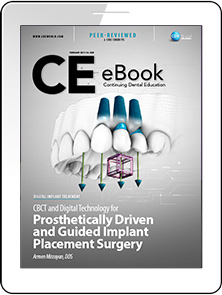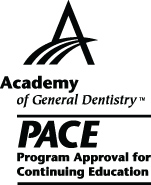CDEWorld > eBooks > CBCT and Digital Technology for Prosthetically Driven and Guided Implant Placement Surgery


ADA CERP is a service of the American Dental Association to assist dental professionals in identifying quality providers of continuing dental education. ADA CERP does not approve or endorse individual courses or instructors, nor does it imply acceptance of credit house by boards of dentistry. Concerns or complaints about a CE provider may be directed to the provider or to ADA CERP at www.ada.org/cerp/

Approved PACE Program Provider. FAGD/MAGD credit. Approval does not imply acceptance by a state or provincial board of dentistry, or AGD endorsement. 1/1/2023 to 12/31/2028. ID # 209722.
eBook
Released: Wednesday, March 8, 2017
Expires: Saturday, February 29, 2020
CBCT and Digital Technology for Prosthetically Driven and Guided Implant Placement Surgery
By Armen Mirzayan, DDS
Commercial Supporter: Burbank Dental Laboratory Inc.
The combination of 3-dimensional (3D) implant planning, guided surgery, and virtual restoration design has completely changed implant dentistry. Cone-beam computed tomography (CBCT) and 3D imaging are now essential tools that enable dentists to digitally plan prosthetically driven implant placement based on a detailed diagnosis of the patient’s condition and the anticipated restorative outcomes. By digitally planning ideal implant location, position, and angulation—and ensuring this is achieved through the use of a digitally created surgical guide—the digital implant treatment workflow enables control and evaluation of all aspects and components of the treatment (eg, implant and abutment selection, implant placement, margin location, tissue contours, contacts). The result is an accurately placed implant that is ideally restored in a much more efficient and predictable manner.
LEARNING OBJECTIVES:
-
Explain the diagnostic benefits of CBCTs compared to traditional radiography for planning implant placement.
-
Identify the necessary prosthetic considerations that must be accounted for during implant placement planning.
-
Describe examples of instances in which CBCTs and treatment planning software can help to determine ideal implant position and angulation.
-
Discuss the CBCT and digital treatment planning workflow involved with surgically and prosthetically driven implant placement and restoration.
About the Author
Armen Mirzayan, DDS
Private Practice, Los Angeles, California


